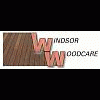-
Content count
3,722 -
Joined
-
Last visited
-
Days Won
58
Everything posted by RPetry
-
Sorry kiddo, did you look at the forecast? Wet here from tomorrow AM through the weekend. We actually need some precip. and at least here in central Jersey, it has been the best season weatherwise in my memory.
-
Beth,
We have no rain in the forecast until a 30% chance Thursday night! What a season of great weather. Still have to wait this morning until 10:30 or so to start staining.
-
Beth,
Tony Szabo had a very good suggestion, one that I have used on a limited basis in prior years. Book jobs now for next spring. With the weather, especially temperatures, getting colder, especially at night, production and workable hours quickly go south.
This past week I have been unable to do any work on exterior wood until 10:30 AM, just to let the heavy overnight dew dry off.
-
Beth,
Not stopping yet, but slowing down by choice. Enough already! Talked to Tom yesterday but did not ask about any dates. Carlos thinks something is in the works.
-
Beth,
Lucky Rod! Still cookin' eh? I'm trying to wind down for the season. It has been a very good year but I am just about worn out. I really miss my college kids! 4 more weeks or so and its 5 months vacation!
-
Hey Beth,
Give Rod a big, fat, wet kiss for his B'day! Off to acid a deck and then finish my own ipe' with A-C. Easy day. Isn't this cool, dry weather great?
-
Beth,
Oh yeah, Mr. Greenie and I were very well acquainted by the time I finished hand brushing my vertical PT wood yesterday. Gotta' go and start a customer's wood this morning. Hope to lambswool my ipe' with A-C late.


